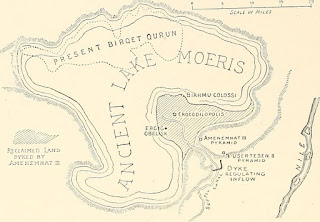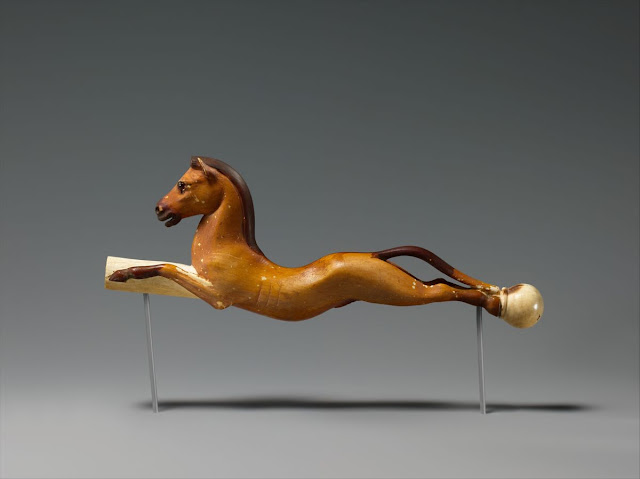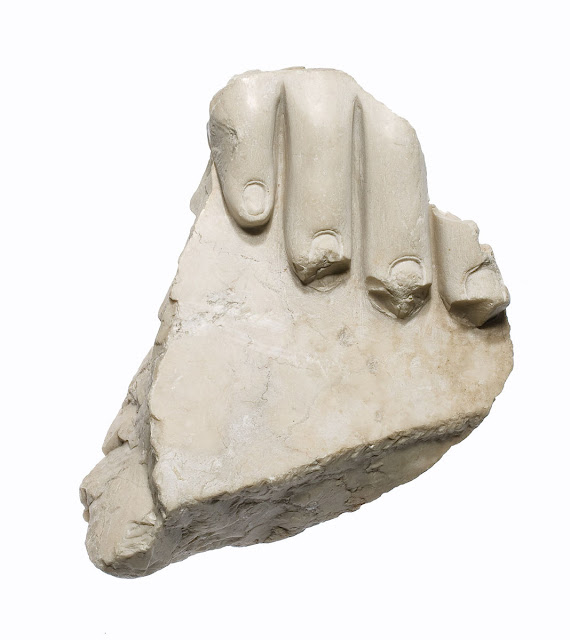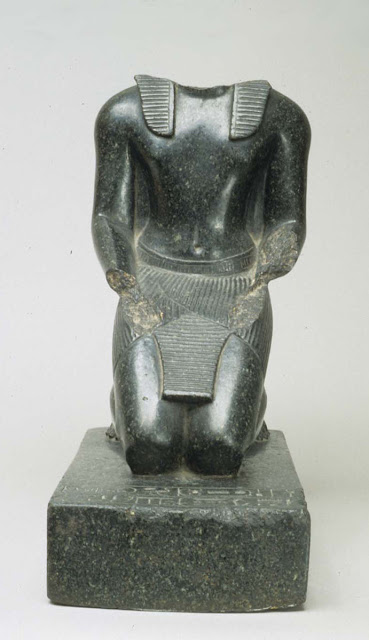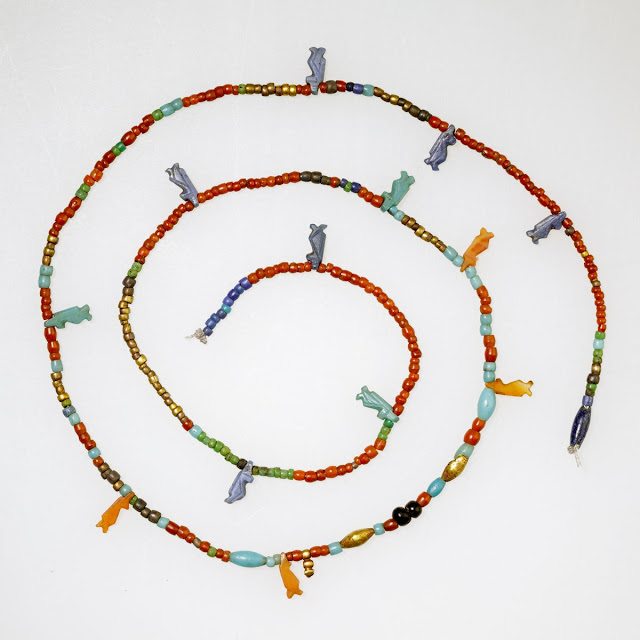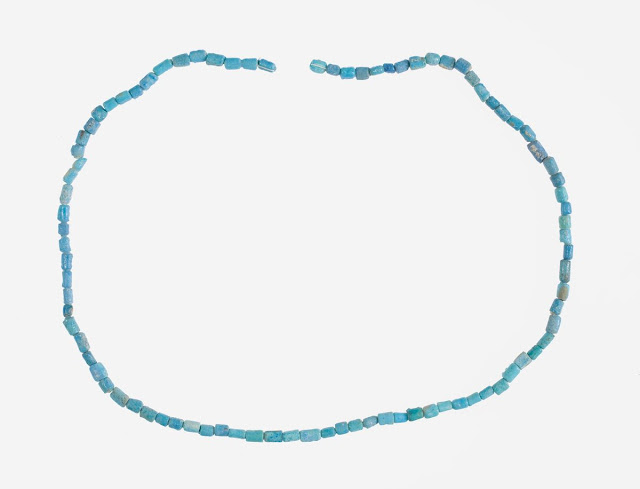A part of the changing Delta formation of the Nile River is a series of lakes connected to the Mediterranean Sea: el-Manzala, el Buruillus, Edku, and Maryut are the largest. They are shallow and swampy and, while fish are taken, there is little settlement nearby or other economic use of them.
The westernmost, Lake Mariotis, has considerable historical importance. At its greatest extent, the lake was some 45 kilometers (28 miles) long, lying to the south and west of Alexandria, parallel to the Mediterranean coast and less than a kilometer (a half mile) south of it. Centered at 31°08‘N, Z9°55'E, the lake was connected to the Nile system under the Ptolemics by a number of small canals, to become a major access to Alexandria, bringing products of the surrounding area and the produce of the Nile Valley.
These were then exported to the Mediterranean world from Portus Mareotis, on the southern side of Alexandria. The land around this lake was rich, and the resultant agricultural production was important to the Alexandrian economy. The area adjacent to the lake produced wines and olives of high quality: the white wines were particularly notable and are mentioned by the Roman poets Horace and Virgil, and others. Several amphora production centers that were located around the lake also attest to the great wine production, since amphoras were the wine containers for shipping. Several Greco Roman towns and sites were located along the lake's borders on the high ground. It was recorded that there were eight islands in the lake with luxurious villas. Present day Alexandria is a major summer resort area for Egyptians, and it would seem that the area of Lake Mariotis served a similar function in ancient times; wealthy Alexandrians probably owned properties in the region and went there for holidays.
Recent Posts:
The westernmost, Lake Mariotis, has considerable historical importance. At its greatest extent, the lake was some 45 kilometers (28 miles) long, lying to the south and west of Alexandria, parallel to the Mediterranean coast and less than a kilometer (a half mile) south of it. Centered at 31°08‘N, Z9°55'E, the lake was connected to the Nile system under the Ptolemics by a number of small canals, to become a major access to Alexandria, bringing products of the surrounding area and the produce of the Nile Valley.
 |
| Lake Mariotis |
These were then exported to the Mediterranean world from Portus Mareotis, on the southern side of Alexandria. The land around this lake was rich, and the resultant agricultural production was important to the Alexandrian economy. The area adjacent to the lake produced wines and olives of high quality: the white wines were particularly notable and are mentioned by the Roman poets Horace and Virgil, and others. Several amphora production centers that were located around the lake also attest to the great wine production, since amphoras were the wine containers for shipping. Several Greco Roman towns and sites were located along the lake's borders on the high ground. It was recorded that there were eight islands in the lake with luxurious villas. Present day Alexandria is a major summer resort area for Egyptians, and it would seem that the area of Lake Mariotis served a similar function in ancient times; wealthy Alexandrians probably owned properties in the region and went there for holidays.
Recent Posts:

